Randy Bachman's top 5 tips for guitarists: “The guitar is the most personal instrument of them all; it’s right against your heart and soul”
The Canadian guitar hero shares his wisdom, as well as what he learned from George Harrison, Jimmy Page and Bob Dylan
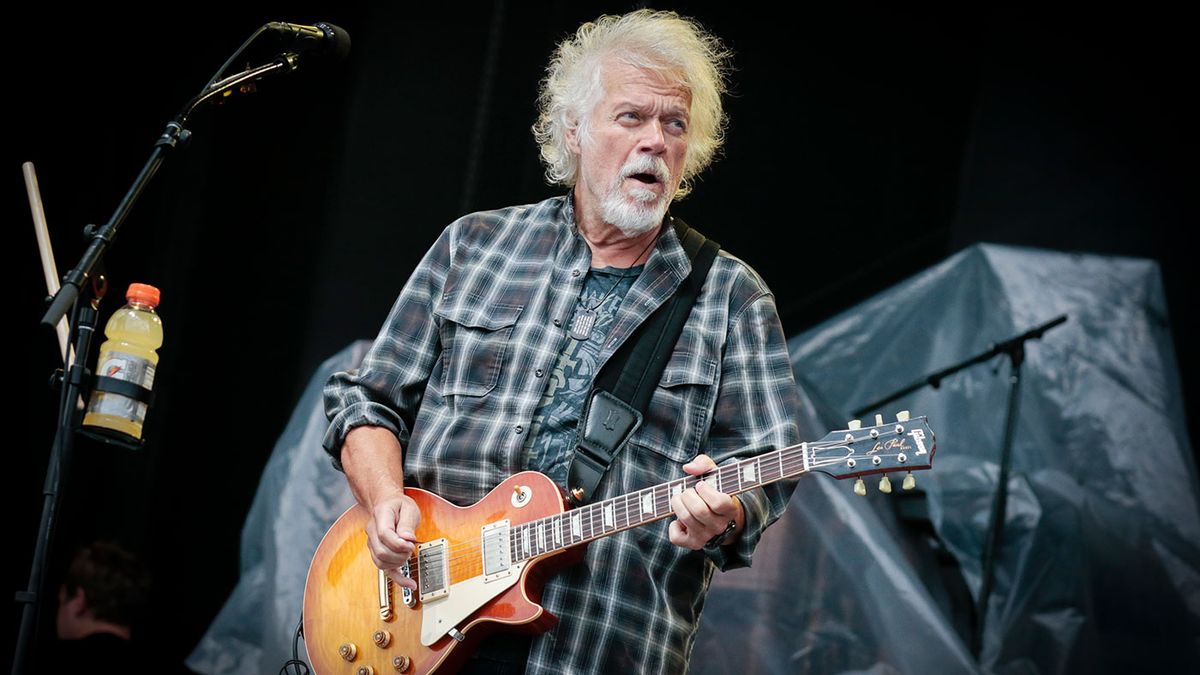
Sat inside the main meeting room of Gibson’s central London HQ, Randy Bachman has a guitar in his hands and is excitedly showing MusicRadar how he came up with his latest set of ideas.
The Canadian guitar legend who founded The Guess Who, Brave Belt and Bachman-Turner Overdrive released By George - By Bachman earlier this year, a tribute to his idol George Harrison, which reimagines the guitarist’s Beatles input and breathes strange new life into their timeless music.
“I’d previously been asked to do a song for a Thin Lizzy tribute,” he begins, explaining he agreed only on the condition he got to record main hit The Boys Are Back In Town.
“They instantly told me we had a deal, nobody else wanted to do that one because they felt there’s no way they could do it better! I got to know Phil really well in 1976, when BTO toured with Thin Lizzy and they were our opening act. So I took that song and turned it into a hip-hop shuffle where I’m rapping… everybody loved it and I think you can find it on YouTube.”
You can’t play Taxman any better than The Beatles; all you can try is redoing it in your own way
It was an experience that in many ways informed how Bachman would pay tribute to his favourite Beatle - using his in-depth knowledge of music theory to twist some of the most popular melodies ever recorded into something brilliantly different.
“So I wanted to do something similar with the George songs, and I took it all very seriously because I really loved and respected him. I wanted to take the major songs and turning them into minor. Here Comes The Sun in minor, for example, sounds very dark - so when you go into the happy major bit at the end, almost like The Gypsy Kings would, it’s as if the sun eventually does come out after all that darkness.
“How can you replicate the lightning in a bottle of putting these guys together, then George Martin shaking the bottle and uncorking it until out comes the song? You can’t play Taxman any better than The Beatles; all you can try is redoing it in your own way.”
Get the MusicRadar Newsletter
Want all the hottest music and gear news, reviews, deals, features and more, direct to your inbox? Sign up here.
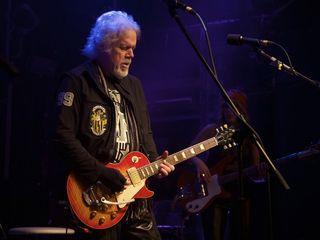
The tribute album also opens and closes with Bachman’s own composition Between Two Mountains, a song so close to the mark that it left many listeners wondering where this unreleased George Harrison gem was unearthed from. For Bachman, there could be no greater compliment about his only contribution to this otherwise Harrison-penned body of work.
“He wasn’t a flash guitar player,” says Bachman of his hero’s background status behind the shooting stars of John Lennon and Paul McCartney.
“Imagine him showing up for a session with those two - who would have 30 songs each and start collaborating away before asking, ‘Hey Georgey Porgie, do you have a song?’ And he’d probably say, ‘I have one called Taxman or this other things called Don’t Bother Me!’ They’d hear it and agree to do it.
“He was a team player and it’s worth remembering his team won every bloody game in every country in the world. It was like world soccer - or in this case, world rocker - and it worked because they were all team players. His guitar playing was very compositional.”
Here, the Canadian maestro prescribes his tips for today’s musicians…
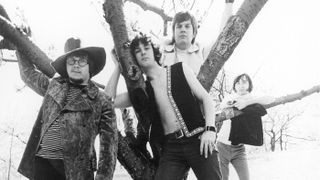
1. Stop caring what other people think
“For example, with this new album, I don’t care if anyone else likes it. To me, the recording was a purely therapeutic and cathartic thing. As a George fan, I think this is amazing to listen to and that’s all that matters.
“A lot of Beatles freaks are gonna put this CD into their car stereo, get into the groove but not really know which song it is until I start singing. Even for the song I composed - Between Two Mountains - I decided to play George’s solos for And I Loved Her and My Sweet Lord, neither of which are on the album. I wanted these songs to have displaced or misplaced solos.
Getting to play like that was amazing; it was a very inspiring process and that’s all that matters to me!
“While working on If I Needed Someone, I realised you can lower the third to turn the C major9 into a minor, then throw in a D7 augmented plus some Hendrix chords… I remember being halfway through and coming out with these jazz licks I’d never used in a rock song since BTO 1 in 1972. Getting to play like that was amazing; it was a very inspiring process and that’s all that matters to me! The way I look at it, you’re never alone when you have a guitar with you.”
2. Be bold when it comes to creativity
“I’ve always liked writing jazzy songs. There was one I did called She’s Come Undone, and everybody told me to try writing another one without copying myself, so years later I wrote Looking Out For Number One which was on BTO 5 and had these lovely jazz chords. I basically took two endings from jazz songs and made one the verse and one the chorus… which comes through experimentation.
Jazz guys wouldn’t play the same thing twice, while I was more used to playing more straight - so I learned a lot from those experiences
“I also did two jazz albums called The Jazz Thing that got great airplay at the time. I hired these jazz players… as a rock guy you play the solo as it’s recorded because that’s what everyone hears in their heads and hearts. But these jazz guys wouldn’t play the same thing twice, while I was more used to playing more straight - so I learned a lot from those experiences.
“One friend told me to get this black and yellow Mickey Baker Jazz Guitar Chords Book - there’s one, two and three - but he said forget the first and last, just get the second one. It’s the same guy from Mickey And Sylvia who did the song Love Is Strange, and he played a black '59 Les Paul.
“Even if you don’t like jazz, that book has chord substitutions to make even the simplest blues progressions a lot more interesting. It takes the more familiar major and minor chord movements and shows you how to switch things up and experiment with different turnarounds. I’ve had my copy since I was 15 and they get reprinted by Mel Bay every few years, so I end up buying every copy I find to give away to my family and friends.”
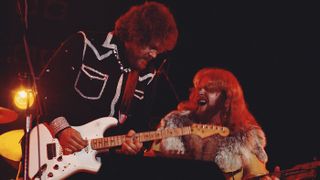
3. Be prepared to learn from anyone
“You can learn from a kid who has been playing for a year or someone like me who has been at it for 40 years. That’s the great thing about guitar playing. You might have been trying to figure out something for years and walk into a music shop and see some kid playing it, thinking to yourself, ‘It’s that easy?!’
“That happened to me with Born To Be Wild: I could never find the little lick in between the chords because I was in the wrong position on the neck. I saw this kid playing it and thought, ‘God, that’s actually incredibly simple!’
I like Scott Holiday from Rival Sons - we trade back and forth on pedals and other things
“As for more modern guitar players, I think Joe Bonamassa is amazing. He’s actually become a really good friend of mine. I played with him as a guest at Hammersmith Apollo. Then he played on my Heavy Blues album, which came about because [producer] Kevin Shirley started telling me he got his next-door neighbour to play a solo on one of the tracks. I thought, ‘Hmm, let me hear it!’ And when he sent it back, I couldn’t believe it.
“I asked who it was and Kevin told me, then I remembered it was the same kid who played with me when he was 11 or 12. His dad brought him to a club in New York and said, ‘My son just played with BB King, can he play with BTO?’ And of course we said, ‘Sure!’ So there he was, not even a teenager with his blond hair and Fender Strat.
“I also like Scott Holiday from Rival Sons - we trade back and forth on pedals and other things, so he played on the same song Joe did which is called Ton Of Bricks. It’s a very Led Zeppelin kinda song I had written.”
4. Mic instruments as you would hear them
“I always go back to the old adage - which Jimmy Page often pointed out himself - that nobody listens to a guitar by putting their ear next to the speaker; you will blow your brains out. Your ears are normally at a distance from the speaker, so it makes sense to put your microphone in the middle of the room.
“If you're playing an acoustic, why would you mic it up by the hole? I always put my mics by my ears, because that’s what I’m hearing and where I pick up the slap rhythms. It’s all about your ears.
Everyone always thought Jimmy Page had a massive Sunn amp on Led Zep 1, when actually it was a little Supro
“Everyone always thought Jimmy Page had a massive Sunn amp on Led Zep 1, when actually it was a little Supro amp upside-down on the floor with the mic 20 feet above it to get the room sound of his Telecaster. There’s a depth to it that’s amazing and it’s all about what you hear.
“When I go to the studio to record, I tend to prefer it being the same size as the room you rehearse in - that’s how you should record. Who cares about bleeding?! One mic can do everything you need. Some Zeppelin drum parts were recorded with only two mics!
“Bob Dylan came to a session once, and I remember after eight hours someone asked if he liked the sound. He told them to take all the mics down because he didn’t want to hear everything; he wanted to hear a band. That’s what felt like something he could sing over. It should be really easy when you think about it!”
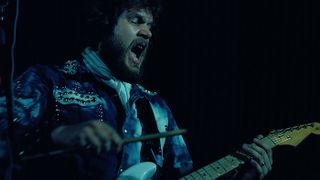
5. Learn the hard way
“Practise alone and then with other players, which is when you should be ripping each other apart. Tell each other when things are sounding wrong, like if your drummer sounds more like Neil Peart on acid when all you want is a straight beat. Do not bring your partner or your parents to the practice, because that’s when it becomes a performance.
Play every single night you are able to… things will break and you will learn how to play through these situations
“Get a house gig and play every single night you are able to… things will break and you will learn how to play through these situations. If your pedals die, you're going to have to go straight into the amp and still make it sound convincing. The more problems you deal with, the better you will become at dealing with them.
“The guitar is the most personal instrument of them all; it’s right against your heart and soul. You can’t embrace a piano or drum kit like that. You put both arms around a guitar and it breathes with you, especially if it’s an acoustic. That all feeds into the tone, the playing and how you move your fingers.
“The best players like Clapton or Page can take any guitar off the wall and go into any amp, and it always sounds like them. It really is all in the fingers. That’s the level I think players should be aspiring to.”
By George - By Bachman is available now via Universal.
Amit has been writing for titles like Total Guitar, MusicRadar and Guitar World for over a decade and counts Richie Kotzen, Guthrie Govan and Jeff Beck among his primary influences. He's interviewed everyone from Ozzy Osbourne and Lemmy to Slash and Jimmy Page, and once even traded solos with a member of Slayer on a track released internationally. As a session guitarist, he's played alongside members of Judas Priest and Uriah Heep in London ensemble Metalworks, as well as handling lead guitars for legends like Glen Matlock (Sex Pistols, The Faces) and Stu Hamm (Steve Vai, Joe Satriani, G3).












